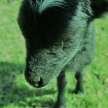
Everybody is a storyteller.
Going right back to the dawn of time, we used the fire at the end of the day to express our thoughts and feelings; to teach our experiences and explain our understandings of the world. Everybody's life and history is a network of stories spanning through the fabric of existence.
So, who was the first storyteller we can remember? Who was the first author in the world to share his knowledge to everyone?
In Western Civilisation it was Aesop who was first, credited with being the author of Aesop's Fables. These stories include The Boy who cried Wolf, The Goose that laid the Golden Eggs, The Lion and the Mouse and who could forget The Tortoise and the Hare.
He was believed to be born in around 620BC and died in Delphi 564BC. The thing is, Aesop is as big an enigma to us as the source of his fairy tales. So here are eight facts, myths and rumours about the first fabulist, the first storyteller who left us his name.

Number 1, was Aesop even real?
Aesop belonged to the oral tradition of storytelling. His fables were not written down until long after his death. The majority of the biographical information we have on Aesop comes from a story called Aesop's Romance. In this story Aesop is in an argument with the philosopher Xanthus. Through the story we learn of his origin story. Here is the problem. This story was endorsed by Plato.
This story was a lesson by Plato to his students about the importance of the kindness of strangers. He also wanted his students to debate the battle of wills between poetry and philosophy. The story is fantastical and many believe to be a creation by Plato. Without this source document being credible there is very little historical evidence to suggest Aesop even existed.

Number 2 Aesop's Fables were not intended for children. Aesop wrote parables. A parable is a simple tale used to illustrate a moral or spiritual lesson. We all think today of Aesop's Fables as being the origin of the modern fairy tale; stories to teach life lessons to our young.
To Aesop's contemporaries they were more than educational, they commented on political aspects of society, philosophy and general aspects of societal nature. Aesop was the grandfather of the fairy tale but he was also the innovator of satire and parody. His fables were debated by the thinkers and philosophers of society and discussed at the highest levels. Students would learn fables, expand upon them, invent their own, and finally use them as examples in longer forensic speeches. They educated the future leaders of the Mediterranean during the times of Antiquity.

Number 3. Aesop believed that out of all the animals in his fables, man represented the fox.
The fox appears the most frequently of all the animals. Usually representing cunning, deceit, or treachery, the fox serves as a basic representative of humanity. Although the fox is often successful because of his trickery, he should not be seen as a hero. The fox’s slyness is accompanied by cowardice, disloyalty, greed, or dishonesty.
These negative qualities can prove to be the fox’s undoing at the end of the story. In The Swollen Fox, the fox cleverly crawls into the hollow of an oak to eat the food left there by a group of shepherds. He ends up being too clever for his own good, because the meal makes him too fat to escape by the same route that he had used to enter.
The morals of the fox fables are nearly always cautionary tales about the worst characteristics of man.

Number 4, Aesop was ugly.
This is how he was described in Aesop's Romance.
...potbellied, misshapen of head, snub-nosed, swarthy, dwarfish, bandy-legged, short-armed, squint-eyed, liver-lipped — a portentous monstrosity.
from Greek trans. Lloyd W. Daly in Hansen (1998)

Number 5, Aesop's Fables contain a cross cultural universal appeal.
Portuguese missionaries arriving in Japan at the end of the 16th century introduced Japan to the fables and translated them into Romanised Japanese. The title was 'Esopo no Fabulas' and dates to 1593. It was soon followed by a fuller translation into a three-volume kanazōshi entitled Isopo Monogatari (伊曾保 物語). This was the sole Western work to survive after the expulsion of Westerners from Japan, since by that time the figure of Aesop had been appropriated and presented as if he were Japanese. Coloured woodblock editions of individual fables were made by Kawanabe Kyosai in the 19th century.

Number 6 Aesop was black.
The first person to argue this idea was Maximus Planudes a 13th century scholar. He argued that the name Aesop was a shortening of Aesopus another version of the word Aethiopos, which means Ethiopian, A person from the country of Ethiopia on Africa's East coast. There has been centuries of debate on Aesop's African origin with major thinkers arguing for and against.
For me the most convincing argument for Aesop's black ancestry is Aesop's Fables are characterised by animals and inanimate objects that talk, solve problems, and have human characteristics. There is a long parallel history of this in African Oral Culture.

For number 7, lets go with how there are only seven different types of story and Aesop's Fables, despite how short they are, covers them all.
All stories are believed to fit into the following seven plot structures.
- Rags to Riches - The Goose that Laid the Golden Eggs,
- The Quest - The Crow and The Pitcher,
- Overcoming the Monster - The Bear and the Travellers,
- Comedy - The Tortoise and the Hare,
- Tragedy - The Boy who Cried Wolf,
- Voyage and Return - The Town Mouse and the Country Mouse
- Rebirth - Zeus and the Tortoise
Clicking on the stories should give you a link to a basic summary of them.

Number 8 Aesop was framed for a crime he did not commit and executed by an angry mob.
Aesop’s power as a story-teller did not save him from him his pride. At Delphi, people who heard him give a speaking exhibition chose not to reward him with gifts. Aesop in response insulted them. In retaliation, the Delphians hid a temple cup in his baggage. They then uncovered it and accused him of theft. Aesop told stories to try to dissuade the Delphians from executing him for theft and blasphemy. But Aesop’s story-telling failed. He was forced to jump off a cliff.
This is the earliest source of 'Pride Comes Before a Fall' an far earlier alternative to the one normally stated on investigation.

Conclusion
This list is endless. I could of wrote a list of fifty things about the fabulous first fabulist. He was born mute. A witch gave him the power of speech. He worked as a puzzle master for a king. The simple truth is the legend of Aesop is as incredible as any of the stories he gifted us storytellers today and through understanding the grandfathers of our craft we can further develop our grandchildren in theirs.

If you enjoyed my article tell your friends or better yet share this article.
You can find more of my stories here.
Have a great day people and keep telling your own stories and sharing your own fables.
Find the Red Laptop...
About the Creator
Tom Brad
Raised in the UK by an Irish mother and Scouse father.
Now confined in France raising sheep.
Those who tell the stories rule society.
If a story I write makes you smile, laugh or cry I would be honoured if you shared it and passed it on..






Comments
There are no comments for this story
Be the first to respond and start the conversation.